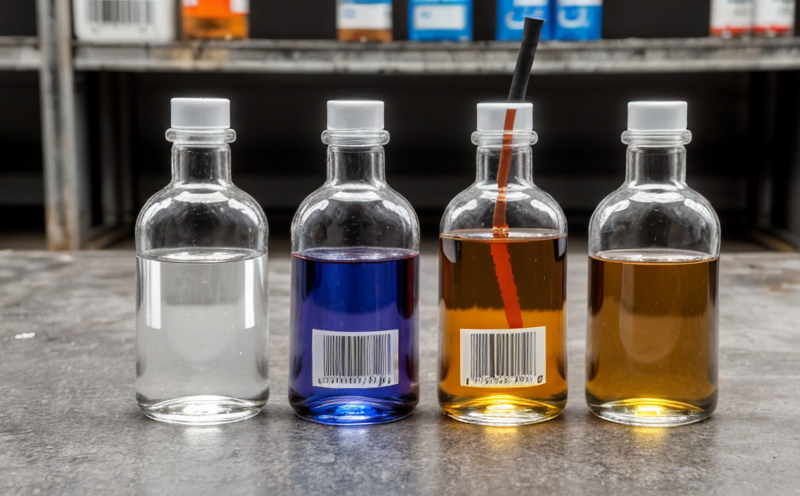AOAC 97231 Stability Testing of Food Preservatives
The AOAC International Standard Method 972.31 is a widely recognized protocol used to assess the stability and degradation of food preservatives under various environmental conditions. This method ensures that food additives remain effective over time, thereby maintaining product quality and safety throughout their shelf life.
Food preservatives play a crucial role in extending the shelf life of perishable foods by inhibiting bacterial growth, mold formation, and oxidation reactions. However, these chemicals can degrade when exposed to light, heat, humidity, or other environmental factors. AOAC 97231 provides a standardized approach to evaluate how these changes affect preservative efficacy.
This method is particularly important for quality managers, compliance officers, R&D engineers, and procurement specialists who need reliable data to ensure regulatory compliance and product integrity. By conducting stability testing according to this standard, companies can demonstrate that their products meet international safety standards and perform consistently under real-world conditions.
The protocol involves exposing samples of the preservative to controlled environmental stressors such as temperature, humidity, light, and oxygen. After specified durations, the samples are analyzed for changes in physical properties like color, viscosity, or chemical composition using precise analytical techniques including high-performance liquid chromatography (HPLC), gas chromatography-mass spectrometry (GC-MS), and Fourier transform infrared spectroscopy (FTIR).
The results provide insights into potential risks associated with prolonged storage or use of the preservative. This information helps manufacturers optimize product formulations, improve packaging designs, and enhance overall food safety practices.
| Environmental Factors | Description |
|---|---|
| Temperature | Ranges from room temperature to elevated temperatures simulating shipping conditions. |
| Humidity | Varying levels to mimic different geographic regions and storage environments. |
| Light | Direct sunlight exposure or artificial light sources to simulate natural and artificial aging effects. |
| Oxygen | Controlled atmosphere packaging (CAP) techniques or modified atmosphere packaging (MAP). |
The testing process typically lasts several months, depending on the half-life of the preservative being evaluated. Throughout this period, periodic assessments are made to observe any signs of degradation. Once completed, a comprehensive report detailing all observed changes and their implications is prepared.
AOAC 97231 stability testing not only supports product development but also aids in meeting global regulatory requirements set forth by organizations such as the Food and Drug Administration (FDA) and European Food Safety Authority (EFSA).
Scope and Methodology
- Sample preparation: Preservatives are prepared according to standard practices.
- Environmental stressor application: Samples are exposed to controlled temperature, humidity, light, and oxygen levels.
- Analysis: Periodic analysis using HPLC, GC-MS, FTIR, and other relevant techniques.
- Data interpretation: Changes in physical properties and chemical composition are recorded and analyzed.
The method ensures that preservatives retain their intended functionality throughout the product's shelf life. Compliance with this standard helps manufacturers maintain consistent quality standards across different markets while ensuring adherence to international regulatory frameworks.
Quality and Reliability Assurance
Our laboratory adheres strictly to AOAC 97231 guidelines, employing state-of-the-art equipment and trained professionals. Regular calibration of instruments ensures accurate data collection. Additionally, strict quality control measures are in place to prevent contamination and ensure reproducibility.
We use cutting-edge analytical technologies such as HPLC, GC-MS, FTIR, and others to provide precise measurements. These tools help identify even minor changes that could impact product performance. Our team of experts interprets results thoroughly to offer actionable insights for improvement.
By leveraging these advanced methods and rigorous protocols, we guarantee accurate and reliable stability testing outcomes. This commitment ensures clients receive high-quality reports that support informed decision-making processes within their organizations.
Customer Impact and Satisfaction
- Enhanced product safety: Ensures compliance with international standards for food additives.
- Improved regulatory approval rates: Simplifies the process of obtaining necessary certifications.
- Better product formulation: Identifies potential issues early, allowing for adjustments before launch.
- Increased market confidence: Demonstrates commitment to producing safe and effective products.
- Prolonged shelf life: Extends the usability period of preservatives, reducing waste and cost.
- Cost savings: Early identification of problematic formulations prevents costly recalls or reformulations later in production cycles.
- Eco-friendly practices: Optimized usage reduces unnecessary consumption of raw materials and energy resources.
Our clients benefit from these tangible improvements through enhanced consumer trust, reduced operational costs, and increased market competitiveness. By integrating AOAC 97231 into their product development pipeline, companies can ensure they are meeting the highest industry standards while staying ahead of regulatory changes.





